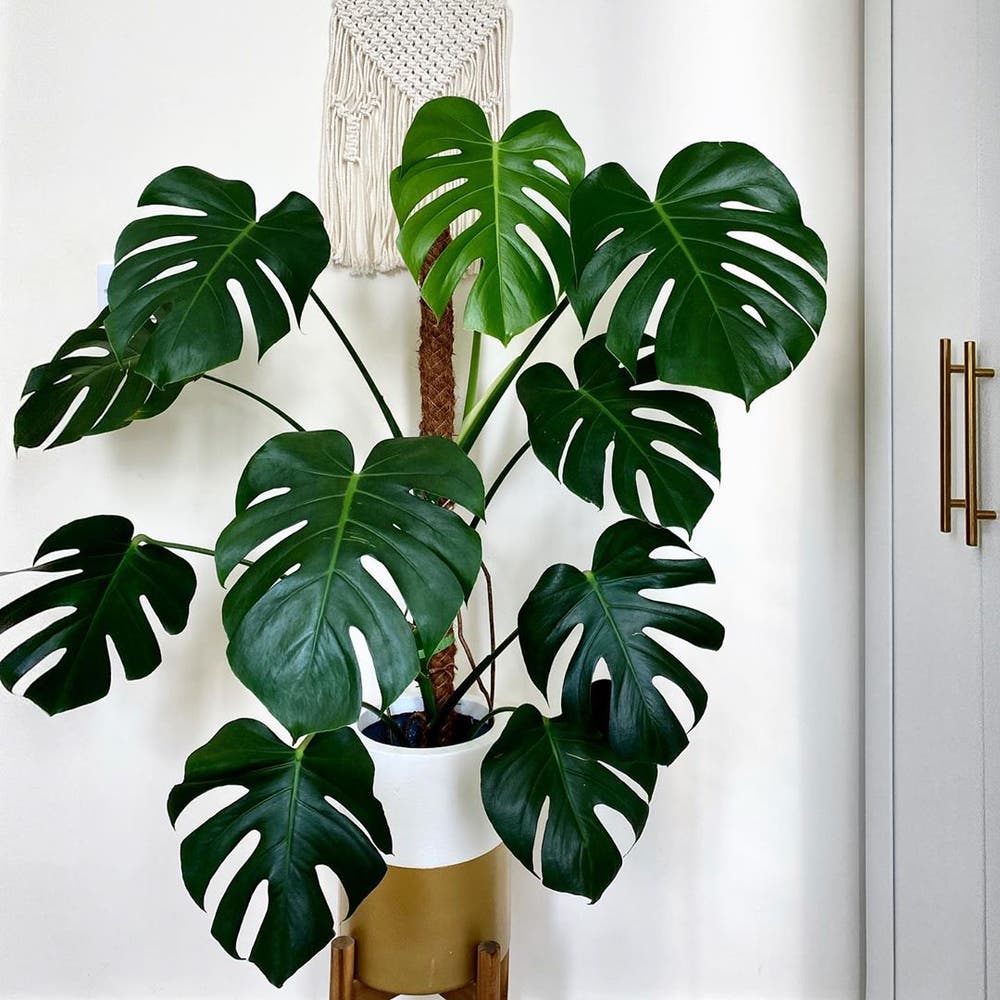Plant Care 🌱

Light: The right amount of sunlight is essential for a monstera’s leaf development. Place it in a
spot where it can receive filtered, indirect sunlight. Too much direct sunlight can give a monstera
yellow or scorched
leaves. You may need to rotate your plant if you notice its leaves reaching for sunlight, so just be
sure to keep an eye
on it.

Water: You should water your plant when the first couple inches of soil are dry. Poke your finger
in
the
soil to check
its dryness. Monsteras prefer peaty, well-draining soil since overly-moist soil can lead to root
rot.
These plants also
sometimes grow aerial roots over time. You can cover these roots with moist sphagnum moss or direct
them
to the soil so
they can also get plenty of water.

Temperature: The monstera plant prefer normal room temperatures between 68–86 °F. Since it
originally
comes from
tropical rain forests, a similar tropical and humid atmosphere will make this plant feel right at
home.
Misting your monstera deliciosa once a week can increase humidity around the plant if you live in a
dry
area.

Toxicity: All parts of this plant, excluding its ripe fruit, are poisonous to humans and pets
making
the
larger variety not an ideal choice for pet owners. Opt for a mini variety like the M. deliciosa
borsigiana that you can
keep high on shelves to prevent your curious furry friends from taking a bite. The plant can cause
stomach pains if
ingested and skin
irritation if touched because of the calcium oxalates found in its sap. It’s still safe to have in
your
home, as long you do not ingest any part of the plant and take extra care when handling it. Take a
look
at our guide
to poisonous plants to learn more about what to do if part of a monstera is ingested.
Learn more on
Bloomscape 🌱




